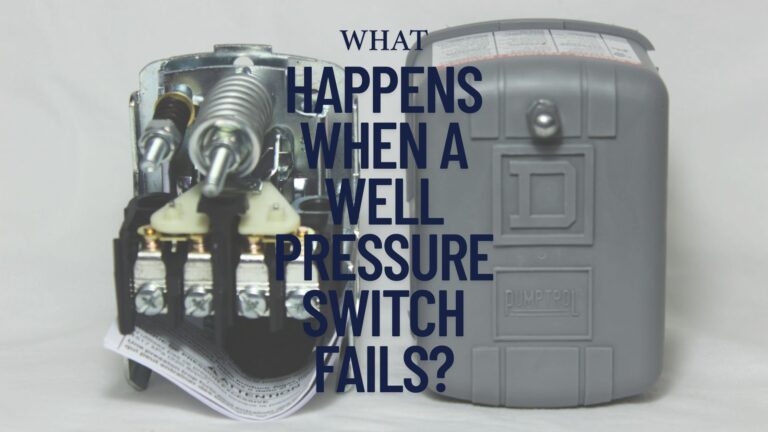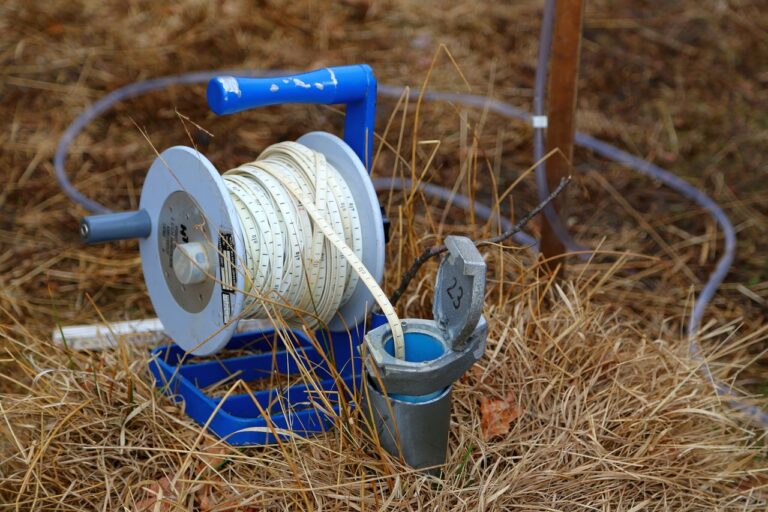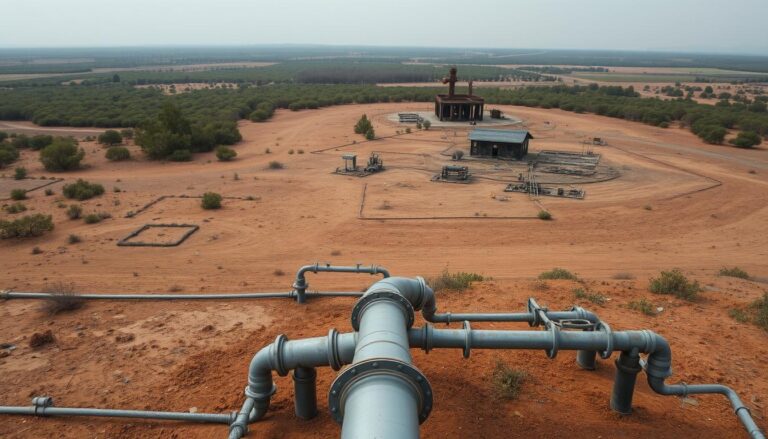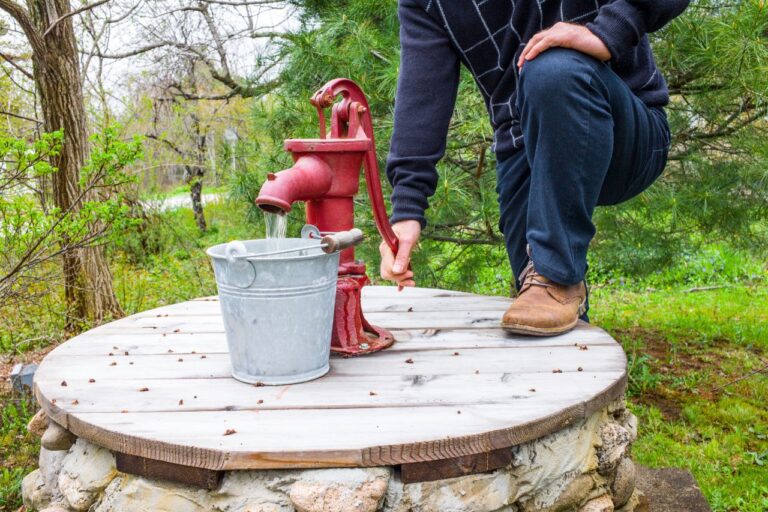What to Do About Old, Unused Water Wells
Are abandoned water wells lurking on your property, posing a hidden threat? Many property owners are unaware of the potential dangers these inactive wells can cause, from safety hazards to groundwater contamination.
Out-of-service wells, if not properly maintained or decommissioned, can become a significant liability. It’s crucial to address these wells to prevent accidents and protect groundwater quality.
Key Takeaways
- Old, unused water wells can pose significant safety risks if not properly maintained.
- These wells can also contaminate groundwater, affecting local water quality.
- Proper decommissioning of unused wells is essential to prevent these hazards.
- Property owners are responsible for ensuring their wells do not become environmental hazards.
- Regular inspection and maintenance can help identify potential issues early.
Understanding the Risks of Abandoned Water Wells
Abandoned water wells pose significant risks that affect not only the environment but also human safety and property values. These wells, if left unattended, can become conduits for various hazards.
Safety Hazards for People and Animals
One of the most immediate risks associated with abandoned water wells is the physical hazard they pose. Open wells can be a danger to people, especially children, and animals who might accidentally fall into them. The wide diameter of abandoned dug wells makes them particularly hazardous. Proper safety measures, such as capping or filling the well, are essential to prevent accidents.
Groundwater Contamination Concerns
Abandoned wells can also serve as direct pathways for contaminants to reach groundwater. Without proper sealing, these wells can allow surface pollutants, such as agricultural runoff or waste, to enter the aquifer. This can compromise the quality of the groundwater, potentially affecting drinking water sources and ecosystems dependent on groundwater. Implementing groundwater protection measures is crucial to mitigate this risk.
Property Value and Liability Implications
The presence of abandoned water wells on a property can have significant implications for property value and liability. Unaddressed wells can decrease property value by posing a perceived or real risk to potential buyers. Moreover, property owners may be held liable for any accidents or environmental damage caused by neglected wells. Addressing these wells through proper decommissioning can help mitigate these risks and protect property values.
Legal Requirements for Abandoned Well Management
Abandoned well management is subject to a myriad of legal regulations designed to protect public health and the environment. These regulations vary by jurisdiction but share common goals and principles.
Federal Regulations and EPA Guidelines
At the federal level, the Environmental Protection Agency (EPA) provides guidelines for well decommissioning. While these guidelines are not always mandatory, they serve as a critical resource for states developing their own regulations. The EPA emphasizes the importance of proper well sealing to prevent groundwater contamination and ensure safety.
State-Specific Well Sealing Regulations
State regulations regarding well sealing are diverse, reflecting local hydrological conditions and environmental concerns. For instance, Wisconsin law requires that only licensed well drillers and pump installers can fill and seal wells, ensuring that the work is done by competent professionals. Similarly, in Oregon, homeowners must work with the Water Resources Department to properly abandon or decommission a well, highlighting the need for compliance with local regulations.
Local Permit and Reporting Requirements
In addition to state regulations, local authorities often have their own permit and reporting requirements for well decommissioning. These may include obtaining permits before work begins and submitting reports after the process is completed. Compliance with these local requirements is crucial to avoid legal issues and ensure that the decommissioning is done correctly.
Understanding and adhering to these legal requirements is essential for the safe and effective management of abandoned wells. It not only helps in preventing environmental hazards but also in protecting public health.
Identifying and Assessing Your Old Water Well
The process of managing old, unused water wells begins with locating and assessing them. This initial step is crucial for determining the appropriate course of action, whether it be restoration, temporary deactivation, or permanent decommissioning.
Locating Hidden or Forgotten Wells on Your Property
Identifying the location of old wells can be challenging, especially if they have been abandoned for many years. Clues to their whereabouts include pipes sticking out of the ground, small structures that may have served as a well house, depressions or sinkholes in the ground, and the presence of concrete vaults or pits. Property owners can also consult old records, such as historical maps or previous property surveys, to aid in the search.
Determining Well Construction Type and Materials
Once a well is located, the next step is to determine its construction type and materials. This information is vital for assessing the well’s condition and deciding on the best management strategy. Common well construction types include drilled, dug, and driven wells, each with its own characteristics and potential risks. For more detailed information on well construction, refer to resources such as water well management guides.
Evaluating Well Condition and Contamination Risk
Evaluating the condition of an old well involves assessing its potential for contamination and safety risks. Factors to consider include the well’s age, construction materials, and surrounding environmental conditions. A thorough evaluation will help determine whether the well poses a risk to groundwater quality or human safety, guiding the decision-making process for its management.
By carefully identifying and assessing old water wells, property owners can take the first steps towards ensuring their safety and mitigating potential environmental impacts. Whether the goal is water well removal or abandoned well restoration, a thorough initial assessment is key to a successful outcome.
What to Do About Old, Unused Water Wells: Your Options
When faced with an old, unused water well, property owners must decide the best course of action to ensure safety and compliance with regulations. The decision-making process involves evaluating the well’s condition, considering its potential future use, and understanding the available management options.
“The management of abandoned wells is a critical aspect of groundwater protection and safety,” as emphasized by water resource management experts. Proper handling of unused wells is essential to prevent contamination and ensure environmental safety.
Restoration for Continued Use
If the well is still in good condition and has the potential for future use, restoration might be a viable option. This involves a thorough inspection and assessment of the well’s integrity, followed by necessary repairs or upgrades to meet current water quality standards.
Restoration can be a cost-effective solution if the well is to be used again. It involves cleaning, disinfecting, and potentially replacing worn-out parts such as pumps and casings. However, the feasibility of restoration depends on factors like the well’s age, construction, and previous maintenance.
Temporary Deactivation Methods
For wells that are not currently in use but may be needed in the future, temporary deactivation is an alternative. This involves securing the wellhead, ensuring it’s safe from accidental entry, and possibly conducting periodic maintenance checks.
Temporary deactivation can be a prudent choice for wells that are expected to be reused. It’s a less permanent solution that allows for easier reactivation when needed. However, it’s crucial to follow local regulations regarding the temporary closure of wells.
Permanent Decommissioning Benefits
Permanent decommissioning, or abandonment, is the most appropriate course of action for wells that are no longer needed or are beyond repair. This process involves filling the well with appropriate materials to prevent groundwater contamination and seal it to prevent physical hazards.
Permanent decommissioning offers several benefits, including the elimination of safety hazards, prevention of groundwater contamination, and compliance with regulatory requirements. It’s a definitive solution that removes the liability associated with maintaining an unused well.
According to the EPA, proper well decommissioning is crucial for protecting groundwater resources. “Decommissioning a well properly is essential to prevent potential pathways for contamination and to eliminate physical hazards.”

Once a well is determined to have no current or potential future use, contacting a water well contractor is the next step to advise on the most appropriate well decommissioning method. This ensures that the chosen method complies with local regulations and effectively mitigates any risks associated with the well.
The Well Decommissioning Process Explained
Properly closing an abandoned water well is crucial for preventing contamination and ensuring public safety. The well decommissioning process is a complex series of steps that must be followed carefully to achieve the desired outcome.
Pre-Decommissioning Site Preparations
Before the actual decommissioning begins, the site must be prepared. This involves clearing the area around the well of any debris or obstacles that could interfere with the process. It’s also essential to identify the well type and its construction materials to determine the best approach for decommissioning.
Removal of Pumps and Well Equipment
The next step is the removal of pumps and other equipment from the well. This must be done carefully to avoid causing any damage to the well casing or surrounding formation. Professionals use specialized tools for this purpose, ensuring that all equipment is safely retrieved.
Disinfection and Cleaning Procedures
Prior to filling and sealing, the well may need to be disinfected and cleaned. This step is crucial for removing any contaminants that could potentially spread through the aquifer. Disinfection procedures typically involve the use of chlorine or other disinfectants to kill bacteria and other microorganisms.
Filling and Sealing Methods by Well Type
The final step in the well decommissioning process is filling and sealing the well. The method used can vary depending on the well type and local regulations. Generally, wells are sealed from the bottom up using approved backfilling materials. Licensed well contractors have the necessary equipment and expertise to perform this task correctly, ensuring that the well is properly sealed and the aquifer is protected.
The well decommissioning process is not a DIY project; it requires the expertise of licensed professionals. By hiring a qualified well contractor, property owners can ensure that their abandoned wells are decommissioned safely and in compliance with regulatory requirements.
Common Challenges in Well Decommissioning
One of the most significant issues with abandoned wells is the complexity involved in their decommissioning. Well decommissioning is a critical process for ensuring groundwater protection measures are in place, especially when dealing with abandoned water wells.
Several challenges can arise during this process, including difficult access issues, collapsed or damaged wells, and managing artesian well conditions. Understanding these challenges is crucial for effective well decommissioning.
Dealing with Difficult Access Issues
Difficult access to abandoned wells can significantly complicate the decommissioning process. This can be due to various factors such as the well’s location, overgrown vegetation, or structural obstacles.
To address these issues, it’s essential to plan the access route carefully and utilize appropriate equipment. In some cases, specialized machinery may be required to safely access the well.
Addressing Collapsed or Damaged Wells
Collapsed or damaged wells pose another significant challenge. The condition of the well can affect the decommissioning method, requiring adjustments to ensure safe and effective closure.
| Well Condition | Decommissioning Approach |
|---|---|
| Collapsed | Specialized filling materials and techniques |
| Damaged Casing | Repair or replacement of casing before sealing |
| Intact | Standard filling and sealing procedures |
Managing Artesian Well Conditions
Artesian wells, which flow naturally due to pressure, require special consideration. Managing artesian conditions involves controlling the flow to prevent waste and ensure safe decommissioning.
Techniques such as installing a valve to control the flow or using specialized sealing materials can be employed. It’s crucial to follow groundwater protection measures to prevent contamination.
In conclusion, decommissioning abandoned water wells involves overcoming various challenges. By understanding and addressing these issues, property owners can ensure that wells are decommissioned safely and effectively, protecting groundwater resources.
DIY vs. Professional Well Decommissioning
When it comes to decommissioning old, unused water wells, property owners often face a crucial decision: whether to tackle the task themselves or hire a professional. This decision is not trivial, as improper well decommissioning can lead to safety hazards, groundwater contamination, and other environmental issues.
Understanding the risks and regulations surrounding well decommissioning is essential. Well decommissioning guidelines vary by jurisdiction, but most emphasize the importance of proper sealing to prevent contamination and ensure safety.
When You Can Handle It Yourself
In some cases, property owners might consider decommissioning a well themselves, especially if it’s relatively accessible and not too deep. However, it’s crucial to check local well sealing regulations first, as some areas may require professional intervention.
DIY decommissioning might be feasible for very shallow wells or those with straightforward access. Nonetheless, it’s vital to follow proper procedures to avoid potential hazards.
When to Call the Professionals
Most well decommissioning tasks are complex and require specialized knowledge and equipment. For instance, under Wisconsin law, only licensed well drillers and pump installers are authorized to fill and seal wells, highlighting the importance of hiring professionals for such tasks.
Professional well contractors have the necessary training, experience, and equipment to handle decommissioning safely and effectively, ensuring compliance with local regulations and guidelines.
Finding and Vetting Qualified Well Contractors
To find a qualified well contractor, start by checking local licensing and certification requirements. Look for contractors with experience in well decommissioning and ask for references.
It’s also wise to get multiple quotes and compare services offered. Ensure that the contractor is familiar with local well decommissioning guidelines and well sealing regulations, and can provide a clear plan for the decommissioning process.
Cost Considerations for Well Decommissioning
The cost of decommissioning a water well can vary widely based on several factors. Understanding these costs is essential for property owners to budget and plan accordingly.
Decommissioning a well is not a one-size-fits-all process. The expenses can range significantly depending on the well’s characteristics and the decommissioning method employed.
Typical Price Ranges by Well Type and Depth
The type and depth of the well are primary factors influencing decommissioning costs. For instance:
- Shallow wells (less than 50 feet deep) might cost between $500 to $1,500 to decommission.
- Deeper wells (50-200 feet) can range from $1,500 to $3,000 or more.
- Very deep wells (over 200 feet) or those with complex geology may exceed $5,000.
Additionally, the well type, such as drilled, dug, or bored, affects the cost due to differences in construction materials and decommissioning techniques.
Factors Affecting Decommissioning Costs
Several factors can influence the overall cost of well decommissioning, including:
- Accessibility: Wells in hard-to-reach locations increase labor and equipment costs.
- Geology: Areas with hard rock or complex geological formations require specialized equipment.
- Well Condition: Collapsed or damaged wells may need additional repair before decommissioning.
- Regulatory Compliance: Meeting local and state regulations can add to the overall expense.
Financial Assistance Programs and Tax Incentives
Property owners may be eligible for financial assistance or tax incentives to help offset the costs of well decommissioning. Programs vary by state and locality, so it’s essential to:
- Check with local water authorities or environmental agencies.
- Consult with a tax professional about potential deductions or credits.
Some states offer grants or cost-share programs for well decommissioning, particularly for projects that improve water quality or protect groundwater resources.

By understanding the factors that influence decommissioning costs and exploring available financial assistance, property owners can make informed decisions about managing their abandoned wells.
Conclusion
Properly decommissioning old, unused water wells is crucial for protecting groundwater quality and preventing safety hazards. As discussed, abandoned wells pose significant risks, including safety hazards for people and animals, groundwater contamination concerns, and property value and liability implications.
To address these issues, it’s essential to identify and assess old water wells on your property. You can then choose from various options, including restoration, temporary deactivation, or permanent decommissioning. The well decommissioning process involves several steps, including pre-decommissioning site preparations, removal of pumps and well equipment, disinfection and cleaning procedures, and filling and sealing methods.
By understanding the legal requirements and regulations surrounding abandoned well management, you can ensure compliance with federal, state, and local guidelines. While some well owners may be able to handle decommissioning themselves, others may need to hire professionals, especially when dealing with complex or challenging situations.
Ultimately, taking action to properly close abandoned wells is vital for safeguarding public health and the environment. By doing so, you can help prevent potential hazards and protect valuable groundwater resources. When considering what to do about old, unused water wells, it’s clear that abandoned well closure is a critical step towards a safer and more sustainable future.







